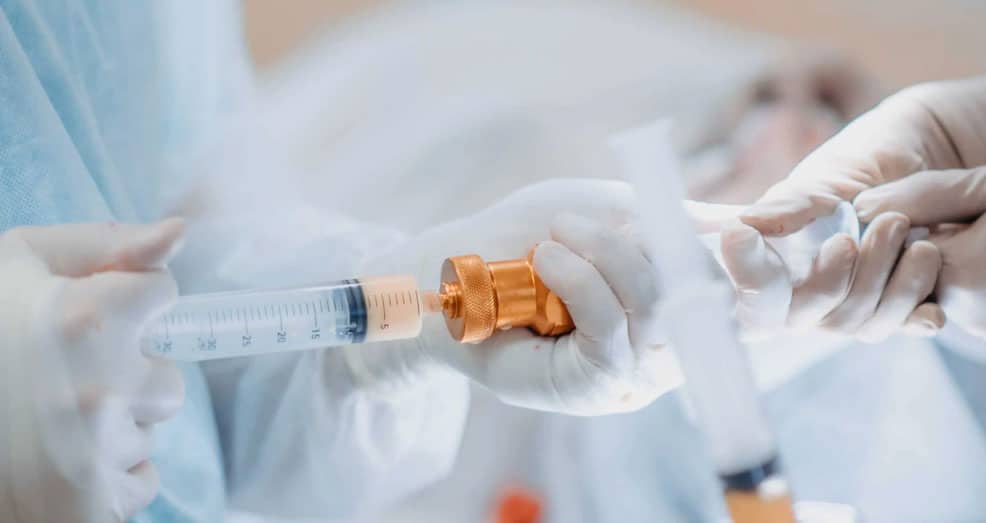Breast augmentation surgery is a great long term option for enhancing the size and shape of the breasts. Although many women desire it, some are apprehensive of the resultant scarring that comes with the procedure as they are primarily concerned about maintaining their natural breast appearance. Transaxillary breast augmentation can be a good solution to this as it can create beautiful, natural looking breasts without noticeable scarring as the incision is hidden in the armpit.
Breast augmentation is commonly performed with incisions around the areola surrounding the nipple (periareolar approach) or along the crease underneath the breasts (inframammary approach) with both techniques resulting in visible scarring.
However, with transaxillary breast augmentation the incision is made along the natural crease of the armpit. It is usually about an inch and a half in length and once healed it is virtually undetectable. This technique is performed in an endoscopic manner in which space can be crafted under direct vision with very minimal bleeding and post-op bruising.
The difference between transaxillary breast augmentation and traditional breast augmentation is the site of incision and the route in which the implants are inserted. Both saline and silicone implants can be used during the transaxillary breast augmentation but this is a complex approach and requires a Board Certified Plastic Surgeon with the specific skills and experience in this technique.
Advantages of Transaxillary Breast Augmentation
- Natural results. The Plastic Surgeon places the implant behind the chest muscle or under the lining of the chest muscle for fuller and soft results.
- Well-hidden scars in the natural crease of the armpit making the scars difficult to detect even when the arms are raised overhead
- No scarring on the breast tissue since no incisions are made in the breast itself
Is Transaxillary Breast Augmentation right for you?
During your consultation with a Board Certified Plastic Surgeon who is an expert in transaxillary breast augmentation, you and your Plastic Surgeon will determine the breast augmentation technique that will suit you best. If it is the transaxillary approach, your Plastic Surgeon will review the procedure and expected recovery timeline with you.
However, the transaxillary approach is not suited for women who require a breast lift in addition to the breast augmentation. This is because the breast lift involves making an incision on the breast tissue so that the implant is inserted in an existing incision that is created for the breast lift.
Procedure for Transaxillary Breast Augmentation
Transaxillary breast augmentation surgery is usually performed as an outpatient procedure under either general anesthesia or local anesthesia with light sedation and it takes about one to two hours to complete.
During the procedure, the Plastic Surgeon creates an incision in the armpit area along the natural skin fold. This ensures that the scar is well hidden following its healing. An endoscope – a narrow fiber optic camera – is inserted through the incision. The endoscope allows viewing of the internal anatomical structures and guides the Plastic Surgeon during the surgical procedure. In addition to the endoscope allowing for the viewing and monitoring, it also minimizes bleeding and scarring.
The Plastic Surgeon then creates an implant pocket –the space where the implant will be positioned- behind the chest wall muscle ro under the lining of the chest wall muscle (called subfacial space).
The implant is then inserted through the underarm incision and into the created pocket. Once the Plastic Surgeon is satisfied with the location and appearance of the breasts, he/she closes the incisions with sutures and the breasts are wrapped in gauze dressings to protect the healing tissues.
Recovery and Results
Following the transaxillary breast augmentation surgery, you can also be dressed in a surgical bra for support.
There is usually some swelling but this decreases over the next few weeks following the surgery. Pain relievers are usually prescribed to help with the post-op discomfort which also subsides as the healing takes place. You will be given instructions to follow as you are recovering at home and it is important to rest for a few days so as to allow for proper healing of the tissues involved. Strenuous activities should be avoided for the next four to six weeks but you can resume light activities and work a week following the surgery.
The results are immediately visible with the optimal results showing once the swelling has gone down completely.
Know more
Would you like to understand what options are available for Transaxillary Breast Augmentation in Dubai? Meet one of our experts at Al Shunnar Plastic Surgery for a personal consultation to develop a tailor-made plan for you. Contact us or Book an appointment and our patient care coordinators will identify the most suitable expert for you.



